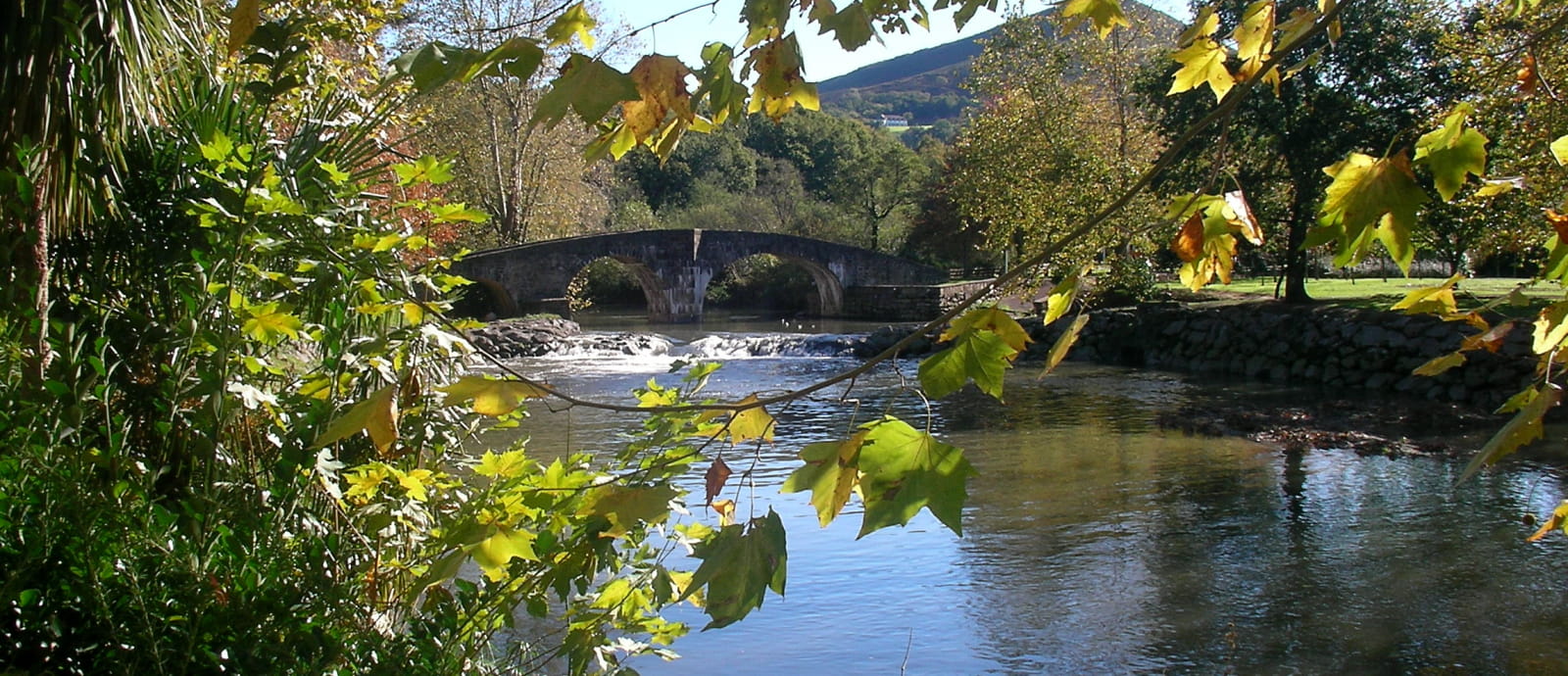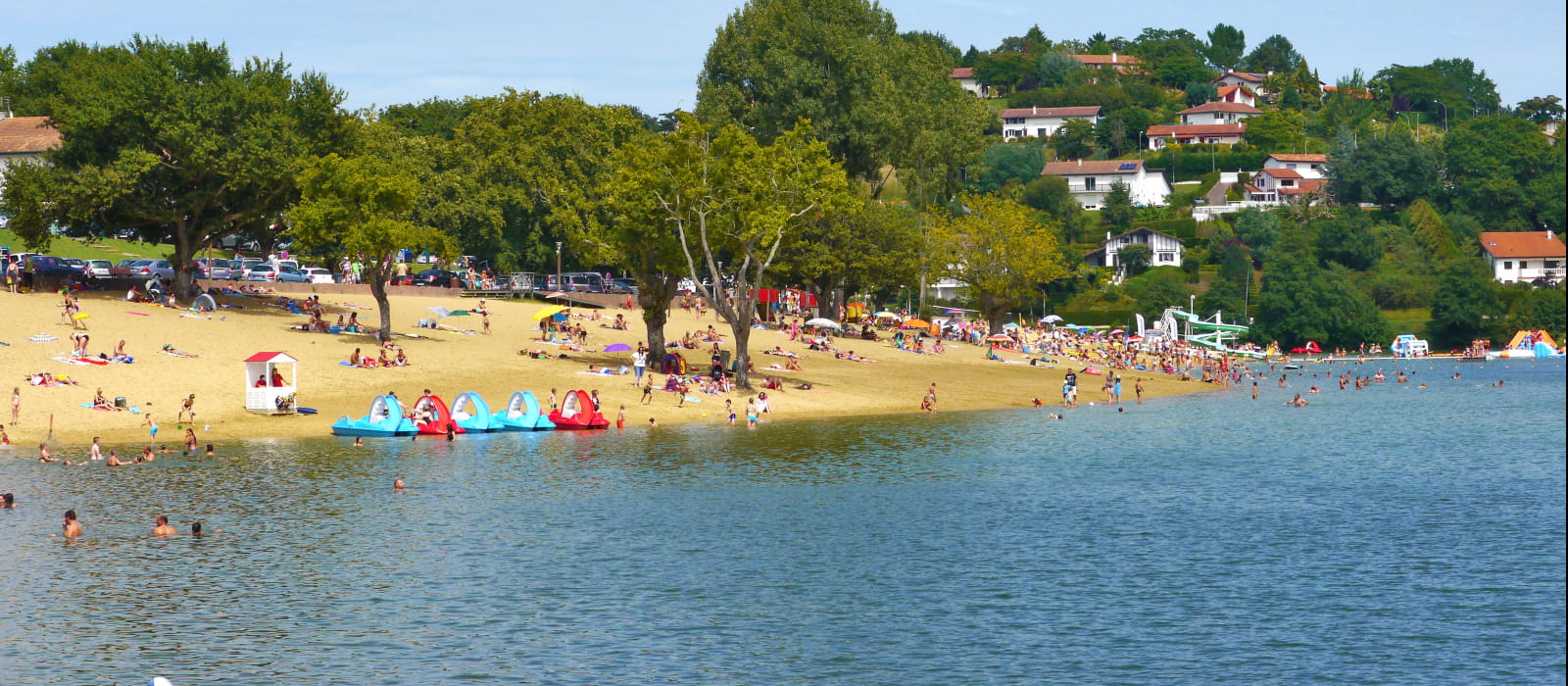
Nivelle valley
Ur ertsiko ibarra
On one side of the Nivelle Valley are the first mountains in the Pyrenean chain and on the other the start of beautiful, green countryside. Just a few kilometres from the main seaside resorts, life in the villages of the Nivelle Valley is agreeably tranquil; the tempo is set by the production of Espelette pimento pepper, agriculture and livestock farming, and leisure activities such as hiking, mountain biking and kayaking.
Villages in the Nivelle valley
The Nivelle valley takes its name from this small river which flows through the Basque countryside for 41 km from Ainhoa to the mouth of the port of Saint-Jean-de-Luz/Ciboure. It has its source on the Spanish side of Navarre and has several smaller tributaries. It flows through a land of agriculture and countryside.
The Nivelle valley gets its name from this small river that winds through 41 km of the Basque countryside from Ainhoa to the port of Saint-Jean-de-Luz/ Ciboure. It has its source in Spain, in Navarre, and has several smaller tributaries. It irrigates the rich agricultural countryside.
Villages in the Nivelle valley
The Nivelle carves a valley through hills and small peaks and passes close to the villages of Saint-Pée-sur-Nivelle, Espelette, Sare and Ascain. Each of these villages has typical as well as original features which deserve a visit. Sare and Ainoa are both listed among the Most Beautiful Villages in France. Espelette is mainly renowned for its pimento pepper, while peaceful Ascain and St-Pée-sur-Nivelle have many opportunities for family hikes.
A stone’s throw from the Ocean and Spain
The villages of the Nivelle valley are only a few kilometres from the Basque coast and the Spanish frontier. So it is very easy to drive to the seaside or pop over the border to go shopping in the ‘ventas’ (frontier shops).
Espelette pimento territory

Ainhoa, Saint-Pée-sur-Nivelle, Souraīde, Larressore and, of course, Espelette are among the ten communes where it is possible to grow authentic Espelette pimento peppers.
This condiment was brought over from the Caribbean in the 16th century and was quickly integrated into Basque agriculture. It is grown from May until the end of August, and then it is dried on the walls of houses.
The pimento pepper is then threaded onto strings, powdered, or used in other culinary preparations….

ASCAIN : A VILLAGE AT THE FOOT OF THE RHUNE

























